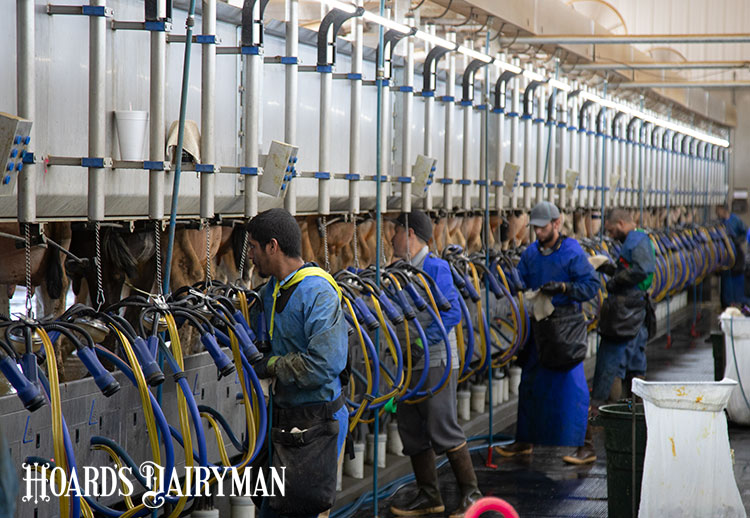
We’ve seen firsthand over the past year that disease is anything but simple. While we’ve been experiencing it for ourselves, the same is true for illnesses in our dairy animals. That’s why udder health expert and consultant Andy Johnson focuses on the whole picture of the “mastitis triangle” to ensure a healthy cow and quality milk.
The cow and its environment, the milking machine, and the milker make up the three components of quality milk. Consistently producing high-quality milk is not “easy” for anyone, he said, but it’s vital for everyone.
“Herd size doesn’t matter. Attitude does,” he emphasized during a National Mastitis Council webinar. “The somatic cell count of each dairy reflects the management decisions and the true attitude of the farm.”
Johnson laid out some of those best management decisions that can help a farm keep udder infections under control.
Cow and its environment
This is the most important point of the triangle for Johnson. He encouraged listening to the cow to understand the whole story of a mastitis case. Specifically, he asked “What are the stalls telling you?”
Having a clean freestall means keeping feet and legs free of manure and having a neck rail to limit how far forward the cows can lie. This keeps manure in the alleyway and can make a big difference in somatic cell count, he stressed. Frequent stall cleaning is also a must for drier, more comfortable beds. “Grooming stalls is my number one recommendation,” he said.
If possible, culturing a deep sample of the bedding material in the stalls can help determine what kinds of pathogens the farm is dealing with, he added.
Machine and its function
Milking machinery function is less of a concern than it used to be because of the advancements in technology and reliability, Johnson noted. However, your milking system still warrants attention because it’s the most used and abused equipment on the farm.
Since every parlor’s milk path is different, Johnson recommended that the most accurate way to check vacuum pressure is while the cow is actually milking. Many people don’t monitor vacuum or know what it should be at peak milk, he said, and reminded that your settings should provide 11.5 to 12.5 inches of Hg at teat end at peak flow.
Milker and their protocol
An effective milking procedure relies on proper lag time more than anything else, according to Johnson. Research recommends at least 90 seconds from strip to attach, he said, recognizing that does not mean from first touch to attach. He added that the majority of overmilking comes at the beginning of milking rather than the end.
Of course, the milking procedure must also be consistent. Post your protocol in an obvious place where all milkers can see it and follow it.
Being vigilant and producing great milk is key to a profitable dairy. “Anybody with quality milk will be competitive and have a market for their milk,” reminded Johnson.








